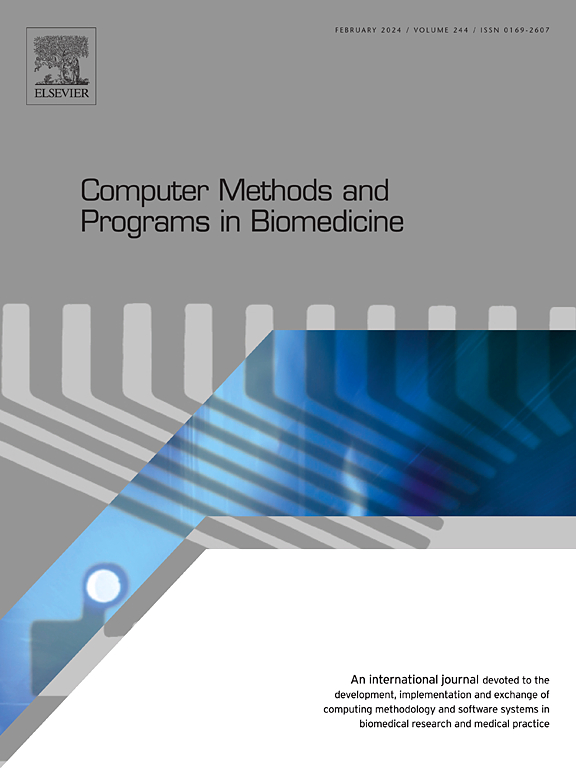Evaluating nebulisation and nasal irrigation efficiency in post-operative chronic rhinosinusitis patients through computational fluid dynamics simulation
IF 4.9
2区 医学
Q1 COMPUTER SCIENCE, INTERDISCIPLINARY APPLICATIONS
引用次数: 0
Abstract
Background and Objective
Chronic rhinosinusitis (CRS) is a prevalent inflammatory condition that substantially affects patients’ quality of life. Functional endoscopic sinus surgery (FESS) is commonly performed in cases where medical therapy fails. Effective post-operative drug delivery is crucial for improving outcomes. This study uses computational fluid dynamics (CFD) to compare nebulisation and nasal irrigation (bottle wash) in post-operative sinonasal models and to evaluate how anatomical alterations affect drug deposition across various paranasal sinuses.
Methods
Eight post-FESS models were generated from the CT scans of a 29-year-old female CRS patient. These models included variations in maxillary ostium sizes, both with and without partial middle turbinectomy. Using 3D Slicer®, images were segmented, and Ansys SpaceClaim® prepared the final geometries. CFD simulations then examined drug delivery efficiency for both nebulisation and nasal irrigation.
Results
Nebulisation faces considerable challenges due to sinus complexity; however, surgical modifications improved nebuliser deposition in the maxillary and sphenoid sinuses. In contrast, nasal irrigation showed higher efficiency in delivering drugs to the frontal sinuses. The residual liquid layer on sinus walls after irrigation significantly impacts comparative evaluations of these methods.
Conclusions
These findings emphasise the importance of adapting drug delivery strategies to specific surgical and anatomical factors. Tailored post-operative protocols may enhance outcomes in CRS, potentially improving patient comfort and compliance, and reducing recurrence rates. Further investigations are warranted to precisely quantify the liquid layer thickness remaining after irrigation, particularly as head movements can result in medication flowing back from sinuses into the nasal cavity.

求助全文
约1分钟内获得全文
求助全文
来源期刊

Computer methods and programs in biomedicine
工程技术-工程:生物医学
CiteScore
12.30
自引率
6.60%
发文量
601
审稿时长
135 days
期刊介绍:
To encourage the development of formal computing methods, and their application in biomedical research and medical practice, by illustration of fundamental principles in biomedical informatics research; to stimulate basic research into application software design; to report the state of research of biomedical information processing projects; to report new computer methodologies applied in biomedical areas; the eventual distribution of demonstrable software to avoid duplication of effort; to provide a forum for discussion and improvement of existing software; to optimize contact between national organizations and regional user groups by promoting an international exchange of information on formal methods, standards and software in biomedicine.
Computer Methods and Programs in Biomedicine covers computing methodology and software systems derived from computing science for implementation in all aspects of biomedical research and medical practice. It is designed to serve: biochemists; biologists; geneticists; immunologists; neuroscientists; pharmacologists; toxicologists; clinicians; epidemiologists; psychiatrists; psychologists; cardiologists; chemists; (radio)physicists; computer scientists; programmers and systems analysts; biomedical, clinical, electrical and other engineers; teachers of medical informatics and users of educational software.
 求助内容:
求助内容: 应助结果提醒方式:
应助结果提醒方式:


